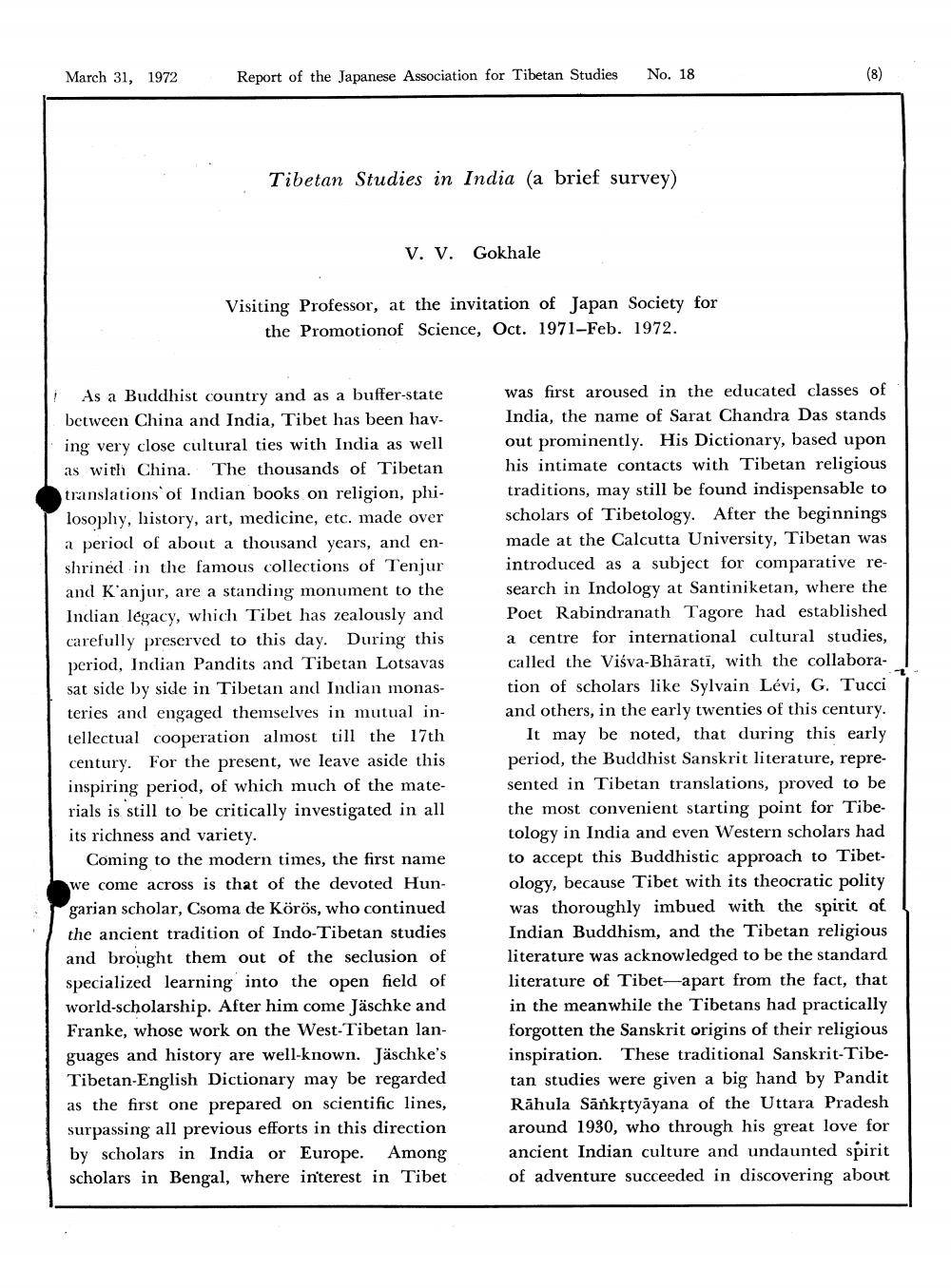Book Title: Tibetan Studies In India Author(s): V V Gokhale Publisher: V V Gokhale View full book textPage 1
________________ March 31, 1972 Report of the Japanese Association for Tibetan Studies No. 18 Tibetan Studies in India (a brief survey) V. V. Gokhale Visiting Professor, at the invitation of Japan Society for the Promotionof Science, Oct. 1971-Feb. 1972. As a Buddhist country and as a buffer-state between China and India, Tibet has been having very close cultural ties with India as well as with China. The thousands of Tibetan translations of Indian books on religion, philosophy, history, art, medicine, etc. made over a period of about a thousand years, and enshrined in the famous collections of Tenjur and Kanjur, are a standing monument to the Indian legacy, which Tibet has zealously and carefully preserved to this day. During this period, Indian Pandits and Tibetan Lotsavas sat side by side in Tibetan and Indian monasteries and engaged themselves in mutual intellectual cooperation almost till the 17th century. For the present, we leave aside this inspiring period, of which much of the materials is still to be critically investigated in all its richness and variety. Coming to the modern times, the first name we come across is that of the devoted Hungarian scholar, Csoma de Körös, who continued the ancient tradition of Indo-Tibetan studies and brought them out of the seclusion of specialized learning into the open field of world-scholarship. After him come Jäschke and Franke, whose work on the West-Tibetan languages and history are well-known. Jäschke's Tibetan-English Dictionary may be regarded as the first one prepared on scientific lines, surpassing all previous efforts in this direction by scholars in India or Europe. Among scholars in Bengal, where interest in Tibet was first aroused in the educated classes of India, the name of Sarat Chandra Das stands out prominently. His Dictionary, based upon his intimate contacts with Tibetan religious traditions, may still be found indispensable to scholars of Tibetology. After the beginnings made at the Calcutta University, Tibetan was introduced as a subject for comparative research in Indology at Santiniketan, where the Poet Rabindranath Tagore had established a centre for international cultural studies, called the Visva-Bhārati, with the collaboration of scholars like Sylvain Lévi, G. Tucci and others, in the early twenties of this century. It may be noted, that during this early period, the Buddhist Sanskrit literature, represented in Tibetan translations, proved to be the most convenient starting point for Tibe. tology in India and even Western scholars had to accept this Buddhistic approach to Tibetology, because Tibet with its theocratic polity was thoroughly imbued with the spirit of Indian Buddhism, and the Tibetan religious literature was acknowledged to be the standard literature of Tibet-apart from the fact, that in the meanwhile the Tibetans had practically forgotten the Sanskrit origins of their religious inspiration. These traditional Sanskrit-Tibetan studies were given a big hand by Pandit Rāhula Sänkstyāyana of the Uttara Pradesh around 1930, who through his great love for ancient Indian culture and undaunted spirit of adventure succeeded in discovering aboutPage Navigation
1 2 3 4 5 6 7 8
